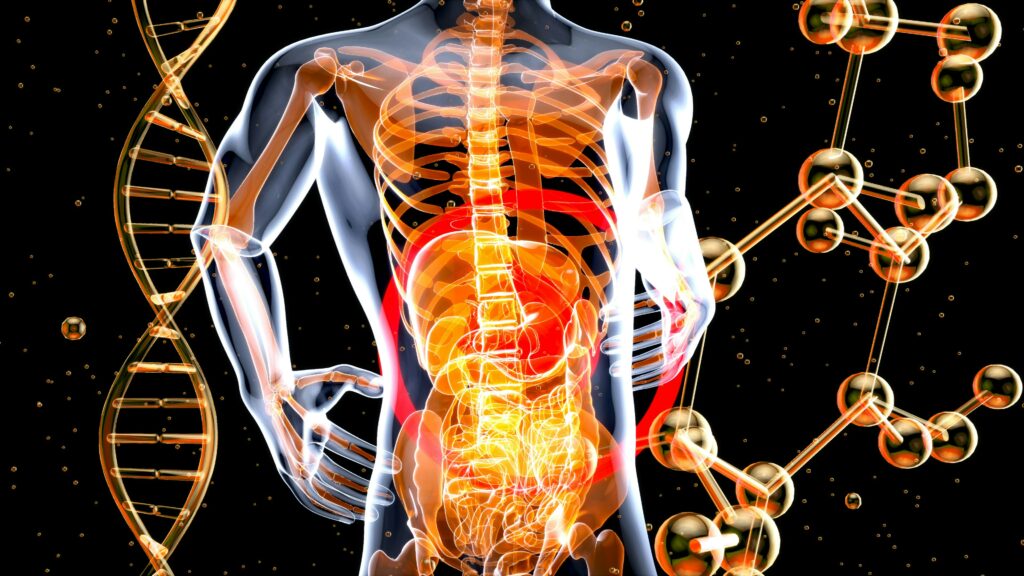- Research
Scope- Translational
Medicine- Transversal Translational Medicine (TTM)
- Translational Medicine Operations Hub (TMOH)
- Clinical Project Management Office (CPMO)
- Clinical and Epidemiological Investigation Center (CIEC)
- Luxembourg Clinical and Translational Research Centre (LCTR)
- Competence Centre for Methodology and Statistics (CCMS)
- Integrated Biobank of Luxembourg (IBBL)
- Disease Modeling & Screening Platform (DMSP)
- Luxgen Genome Center
- Research Pathology Platform (RPP)
- Research Projects & Clinical Trials
- Support Us
- Translational
News
When your meal turns deadly
LIH scientists bring pioneering insights on poorly understood meat allergy
21 April 2022
5minutes
- Translational & Clinical Immunology
- Molecular and Translational Allergology
- Department of Infection and Immunity

α-Gal syndrome is an allergic reaction to meat components that is still lacking proper definition. In an effort to shed light on this poorly understood disease, a team of researchers led by Dr Christiane Hilger of the Luxembourg Institute of Health, breaks the stereotypes in allergology and brings forward evidence of allergic carbohydrate triggers that function irrespective of the carrier molecule.
The so called ‘red-meat allergy’, medically known as α-Gal syndrome, is a potentially life-threatening allergic reaction that occurs following ingestion of red meat or other products derived from mammals. Patients are often diagnosed with α-Gal syndrome following repeated allergic episodes, occurring mostly several hours after a meal. The syndrome is thought to stem from the bite of a tick which transmits α-Gal, a specific type of sugar also called α-Gal carbohydrate, into the patient, leading to the development of an allergy towards red meat . When encountering the carbohydrate in meat products, patients respond as if exposed to an intruder, leading to full-blown allergic episodes. α-Gal syndrome currently does not have any treatment other than the avoidance of meat products, a feat that is rendered more complex by the presence of animal derivatives in some medicines, such as anti-cancer treatments, drugs or vaccines.
Subcutaneous or intravenous administration of α-Gal containing products to a patient affected by the syndrome results in an immediate allergic reaction. Interestingly however, upon oral ingestion of meat-derived products, the allergic reaction is not immediate, but occurs 2-8 hours following consumption of the meat product. Logic suggests an important role of the digestive process in this observed delay, whereby the patient is exposed to the allergen only when the meat is broken down and absorbed through the walls of the digestive tract. Several meat proteins carrying α-Gal have previously been identified by the team of Dr Christiane Hilger, Group Leader of Molecular and Translational Allergology group at the Luxembourg Institute of Health (LIH). Prevailing theories to date have associated the delay in allergic reactions to α-Gal present on meat fats or lipids, as these would take longest to digest, however there has been a lack of experimental evidence. In a recent study, Dr Christiane Hilger explored whether lipid components of the meat could also cause the delayed allergic reaction characteristic of α-Gal syndrome, and which component, meat proteins or meat lipids, would prevail in allergenic potency.
In a first step, the team used highly purified proteins and lipids carrying α-Gal. Both types of molecules were able to strongly bind to antibodies from patients with α-Gal syndrome and were able to stimulate human cells, thereby mimicking an allergic reaction. These findings confirmed that the carbohydrate α-Gal can cause an allergic reaction, irrespective of the carrier molecule.
In a second step, the team investigated natural food sources by extracting proteins and lipids from pork and beef. To measure the allergic reaction to these protein and lipid extracts, Dr Hilger’s team used blood from patients affected by α-Gal syndrome, which contained the antibodies that would bind to α-Gal, and the cells that would trigger an allergic episode. The allergic stimulus induced by each extract was then assessed using markers measuring the allergic response. These reactions observed with blood from allergic patients showed a more potent role of meat proteins carrying α-Gal as a triggering source of the allergic reaction than meat lipids. Remarkably, beef and pork protein were found to be more abundant in α-Gal than the fatty parts.
The team also simulated a gastric and intestinal digestion of meat proteins, showing that α-Gal carrying proteins survive gastric digestion and remain stable for a long time. Unlike previously believed, their results suggest that α-Gal carrying proteins would survive the digestive process long enough to elicit delayed reactions upon absorption in the intestine.
These findings bring a new dimension to the understanding of carbohydrate allergenicity, which, unlike allergies to proteins, is currently not very well understood.
Our findings brought the field of allergology a step further when they showed that an allergic reaction could be triggered by α-Gal irrespective of which part of the meat it was found in. The most important factor is the abundance and stability of the carbohydrate, regardless if it is carried by a lipid or a protein,
adds Neera Chakrapani, PhD candidate and first author of the study.
“These type of insights are not only crucial to identify the relevant trigger molecules in α-Gal syndrome and to create appropriate diagnostic tests, but they also help us understand a type of allergic reaction that we are still learning about,” concludes Dr. Hilger.
These findings were published in “The Journal of Allergy and Clinical Immunology”, one of the top allergy and immunology journals, under the title ‘α-Gal present on both glycolipids and glycoproteins contributes to the immune response in meat-allergic patients’.
Funding and collaborations:
The research was conducted in collaboration with the University of Tübingen, the Centre Hospitalier Luxembourg, the Luxembourg Institute of Science and Technology, the University of Southern Denmark, and the Technical University Munich. The work was supported with a bilateral funding from the Luxembourg National Research Fund (FNR), project C17/BM/11656090 and the Deutsche Forschungsgemeinschaft (DFG), project FI2226/2-1, BI696/12–1, SFB1335 P17, and SFB1371 P06.







